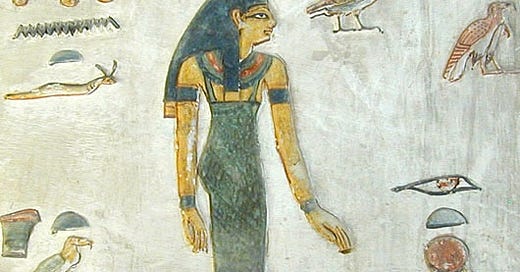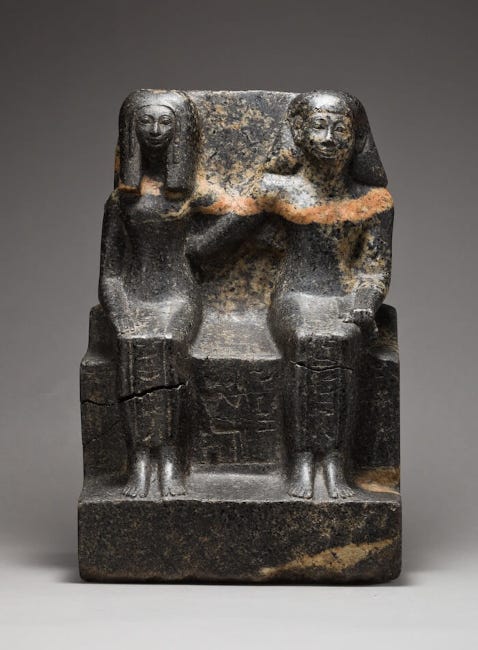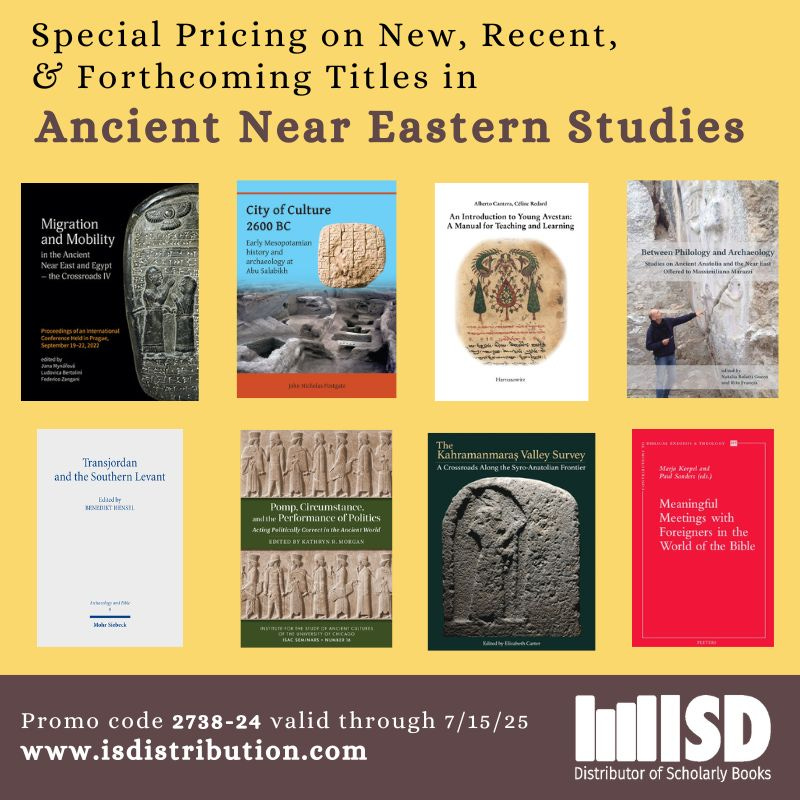ANE Today, 26 June 2025
What is a God in the Ancient Near East?, DC Day of Archaeology, our Object of the Week, plus the usual round-up of news, books, and other media.
What is a God in the Ancient Near East?

By Michael B. Hundley
Editor’s Note: This is the first in a four-part series of articles by Michael Hundley on the nature of “god” in the Hebrew Bible and Near East. Be sure to come back and check out the others!
What is a god? While the question is simple enough, the answer depends on context and perspective. For those raised in the shadow of the great monotheisms — Judaism, Christianity, and Islam — the god category has a singular member who is the creator and perfect unchallenged ruler of the cosmos. For most other modern religious traditions, gods are multiple and variable.
Rather than being a matter of biology, a “god” is a culturally conditioned category. Humans tend to subdivide the world into distinct domains — such as persons, animals, plants, natural objects, and artifacts — and tend to have strong expectations about them. While some may be more or less fixed across cultures, others — like gods — vary considerably, leading to misunderstanding and even repulsion when others do not mirror their own (e.g., the demonization of Hindu gods by European Christians).
Beginning in earnest with the Age of Imperialism, Europeans applied their (Protestant) Christian expectations of God to the lands they encountered, judging other gods based on how closely they resembled the monotheistic archetype. Today too, though often in more benign and unconscious ways, interpreters tend to expect perceptions of ancient gods to conform to modern, and especially Western, divine stereotypes. Some even seem to dismiss native classifications, such as denying that some illnesses and instruments can be “real” gods because they lack personality.
DC Day of Archaeology Festival: Saturday, June 28
Make sure to join ASOR this Saturday, June 28, for this year's DC Day of Archaeology Festival at Tudor Place in Washington, DC. Stop by the event organized by Archaeology in the Community from 10AM to 3PM for music, food, and fun activities!
In the News:
Investigation of ancient Tel Dan sanctuary reveals Phoenician ritual bathing traditions (phys.org)
Skyscrapers of Babel: How ancient Mesopotamia shaped the modern city (Scoop)
We finally know why Queen Hatshepsut’s statues were destroyed in ancient Egypt (LiveScience)
Forged 5000 years ago: The worlds oldest swords discovered at Arslantepe Mound, Türkiye (Arkeonews)
Revealing hidden language patterns in the Bible, with the help of AI (Duke University)
Archaeologists in Turkey claim Church of the Holy Fathers found under lake (Jerusalem Post)
A 2000-year-old Pompeii garden springs back to life (artnet news)
Object of the Week:

New Books to Explore:
Ancient Egyptian Art at the Art Institute of Chicago, by Emily Teeter and Ashley F. Arico (open access!)
The Aegean and Cyprus: Interaction Between Two Distinct Cultural Mediterranean Areas from the Third Millennium to Ca 1200 BC, by Giampaolo Graziadio (open access!)
Josephus and Jesus: New Evidence for the One Called Christ, by T. C. Schmidt (open access!)
Enheduana: Princess, Priestess, Poetess, by Alhena Gadotti
Museum Exhibits:
Special Exhibit: Dead Sea Scrolls (Reagan Presidential Library)
Latest Podcasts:
Naturalizing Inequalities: The Colonial Museum with Dan Hicks (Peopling the Past)
Latest YouTube:
Flooded Tombs of the Nile (National Geographic)
Gerasa: Rome’s Forgotten City in the Jordanian Hills (Histoire & Civilisations)
The Lukka Before they were Sea Peoples (Dig)
Consider taking this short survey to give us feedback on ANE Today.
In Case You Missed It:
Women’s Rights in Marriage in Ancient Egypt
By Alison Wilkinson
In ancient Egypt, marriage was key to establishing a household. What were the expectations of wives and what do we know about women’s rights when entering into—or leaving—marriage? Read more here.
Sponsored: ISD Special Pricing on New, Recent, & Forthcoming Titles
ISD is offering special pricing on new, recent, and forthcoming titles in Ancient Near Eastern Studies. Publishers include Archaeopress, Austrian Academy of Sciences Press, Brepols Publishers, Brill | Schöningh, Classiques Garnier, Cotsen Institute of Archaeology Press, Equinox Publishing, Harrassowitz Verlag, Institute for the Study of Ancient Cultures, Kohlhammer Verlag, Lockwood Press, Mohr Siebeck, Peeters Publishers, Schwabe, Vandenhoeck & Ruprecht Publishers, Warring States Project, Zaphon, and more. Click here to see the full list of titles.
Friends of ASOR Chicago Tour
Registration is now more than half full for the first Friends of ASOR tour in Chicago! Join us on September 18 and 19 for an exclusive behind-the-scenes experience. We will be kicking off our two-day jaunt on September 18 with the grand opening of a special exhibit on Megiddo at the iconic Institute for the Study of Ancient Cultures, followed by a walking tour of monuments and landscapes passing through Grant Park, the Museum Campus, and the Gold Star Families Memorial. On Friday, September 19, we will visit the Greek, Roman, and Egyptian galleries at the impressive Art Institute of Chicago to explore significant new developments and to learn about material little seen by the public. After lunch, we’ll continue our tour to the renowned Field Museum of Natural History, home to the largest and most complete Tyrannosaurus rex skeleton of its kind, among remarkable collections and exhibitions. Space is limited, so reserve your spot now.
Registration and details can be found here.
Enjoy what you’re reading? Consider supporting ANE Today through a once-off or recurring donation to ASOR.
Published with the assistance of The Lanier Theological Library and Stevan Dana








Oh this was wonderful! Thank you so much for sharing this! It’s fascinating to see how the ancient near eastern gods can provide us with an understanding for the concept of deity/god in the Bible.